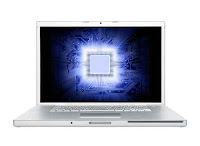1. Explain information technology’s role in business and describe how you measure success?
Information technology is everywhere in business, having the potential to transform new and existing procedures. I.T must be embedded into all aspects of an organisation including customer service, accounting, finance, human resources, marketing, sales, operations management and management information systems. Its role within a business is to reduce costs, increase decision making speeds, bring businesses together, generate growth and most importantly increase productivity and thus profits.
Key Performance Indicators (KPI) is the measures that are tied to business drivers, through the following:
Efficiency IT Metrics: they measure the performance of the IT system to acquire the most from each resource.
Effectiveness IT Metric: measures the impact IT has on business processes and activities of customer satisfaction, sell- through increase and conversion rates. With appropriate goals being set they are able to be accomplished.
Benchmarks: are the baseline values the system aims to achieve. It can involve continuous measures of the systems results, evaluating then providing improvements
2. List and describe each of the forces in Porter’s Five Forces Model?
• Buyer Power: Is high when buyers have many sellers to choose from, low when their choices are few. Buyer power is increased with technology and innovation
• Supplier Power: occur when a company (buyer) purchases raw materials from another companies business (suppliers). It is high when one supplier has concentrated influence over an industry; hence there are fewer options to choose from.
• Threat of suitable products or services: is high when there are many alternatives to a product/ service and low when there are few alternatives to choose from. Must create a competitive advantage, especially if there are few substitutes in the market.
• Threat of new entrants: is high when it’s easy for new competitors to enter the market and low when there are ‘entry barriers’ which alter outcomes.
• Rivalry among existing competitors: It is low when competition within a market is weak and high when competition is strong. There is an overall trend towards increasing competition in almost every industry.
3. Describe the relationship between business processes and value chains?
Business processes are a standardised set of activities that accomplish specific tasks within an organisation. Value Chains add value to a product for the consumer through a series of processes. Support activities must run well and in order to reduce costs, these business processes must run appropiately.
4. Compare Porter’s three generic strategies
Broad Cost Leadership: appeal to wider audience, low cost product eg – Hyundai
Broad Differentiation: More competitive market, slightly broad yet unique product eg – Audi
Focused Strategy: either targeted to a niche market or a broader market, product is innovative as well as concentration on cost leadership and/or differentiation eg – hummer or kia


